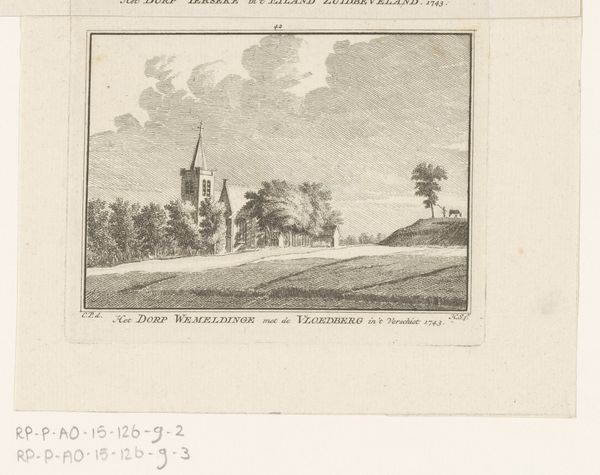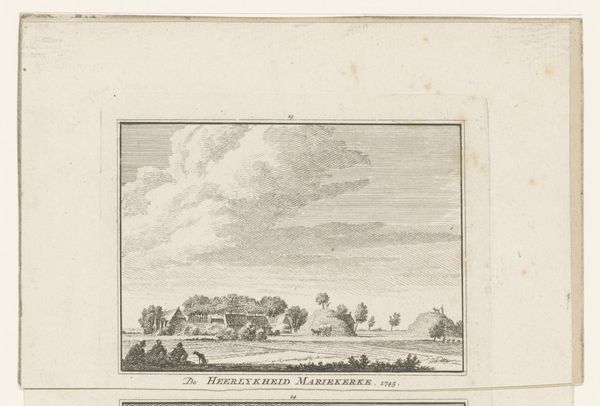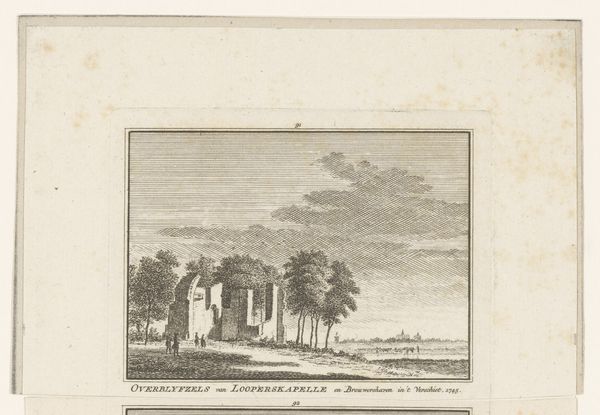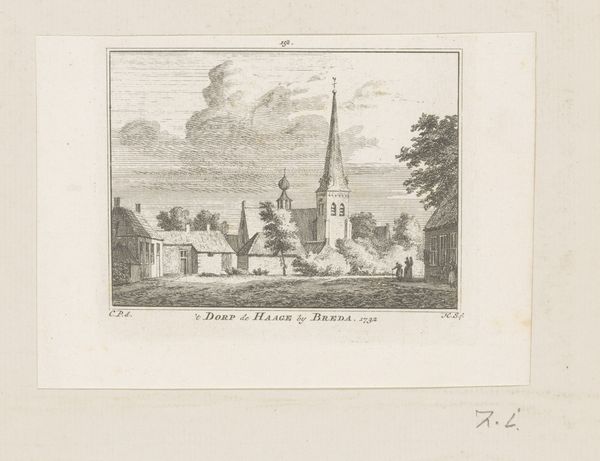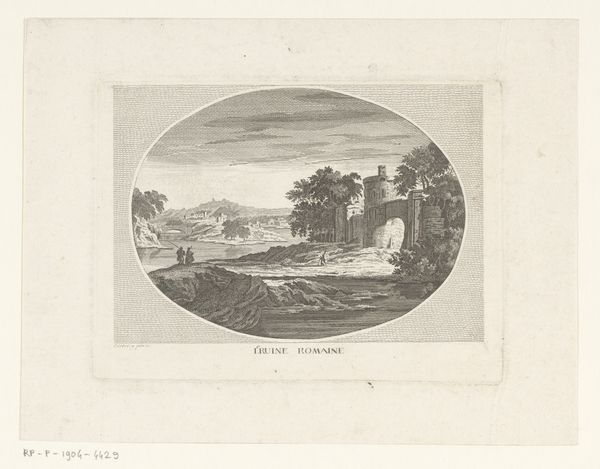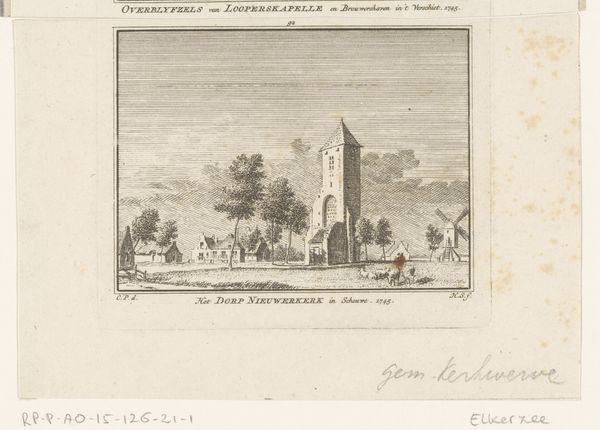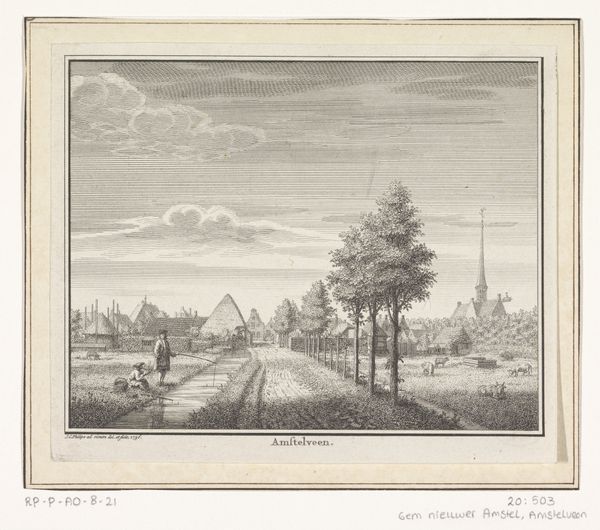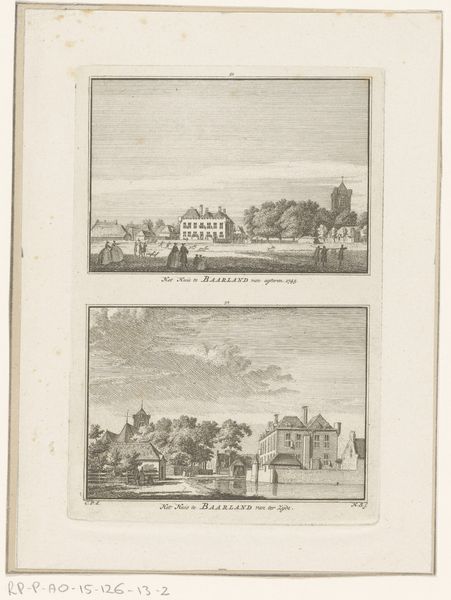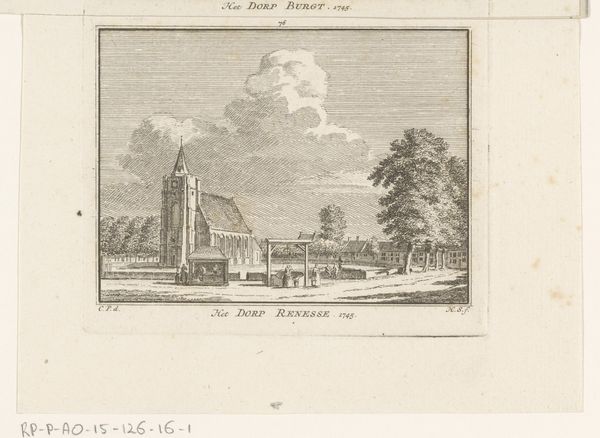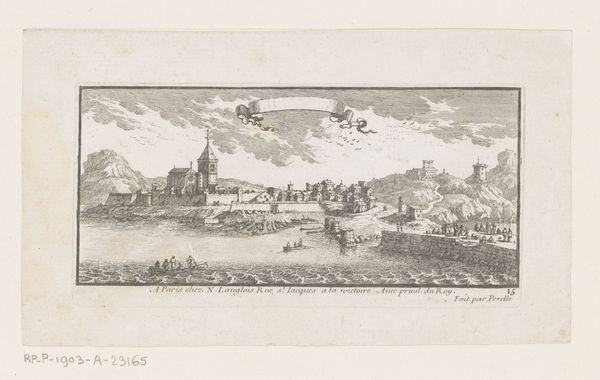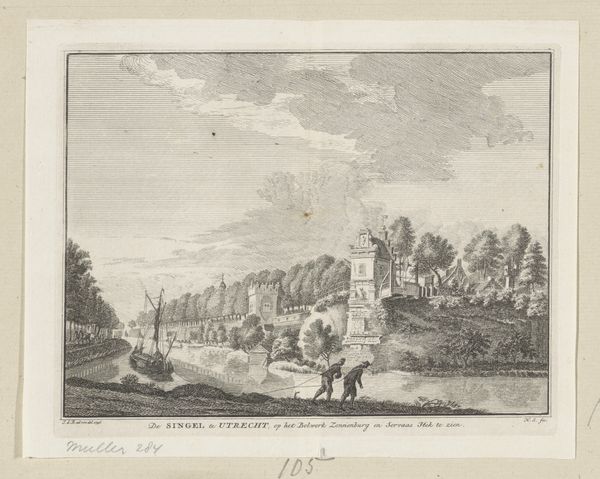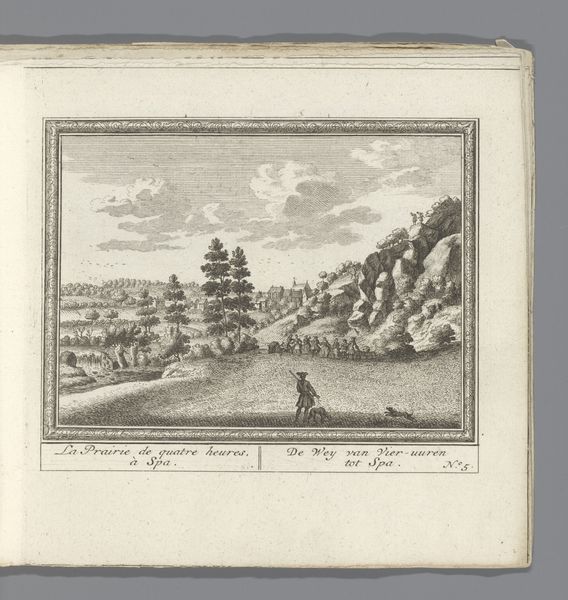
drawing, print, etching, engraving
#
drawing
#
dutch-golden-age
# print
#
etching
#
old engraving style
#
landscape
#
engraving
Dimensions: height 78 mm, width 105 mm
Copyright: Rijks Museum: Open Domain
Hendrik Spilman made this print of Noordwelle in 1745, using etching and engraving techniques. These processes involve covering a metal plate with a waxy, acid-resistant substance, drawing through it to expose the metal, and then immersing the plate in acid. The acid bites into the exposed lines, which are then inked and printed. The fine, precise lines achieved through this method give the image its character. Notice how Spilman uses variations in line weight and density to create a sense of depth, and to describe the forms of the buildings and the landscape. The choice of printmaking speaks to the social context of the time, which was the rise of a mercantile economy and a growing middle class with an appetite for images. Prints like this one were relatively inexpensive to produce and could be widely distributed, providing a snapshot of Dutch life. Paying attention to these materials, processes, and context helps us understand how images like this one were embedded in the culture of their time, blurring the lines between art, craft, and commerce.
Comments
No comments
Be the first to comment and join the conversation on the ultimate creative platform.
